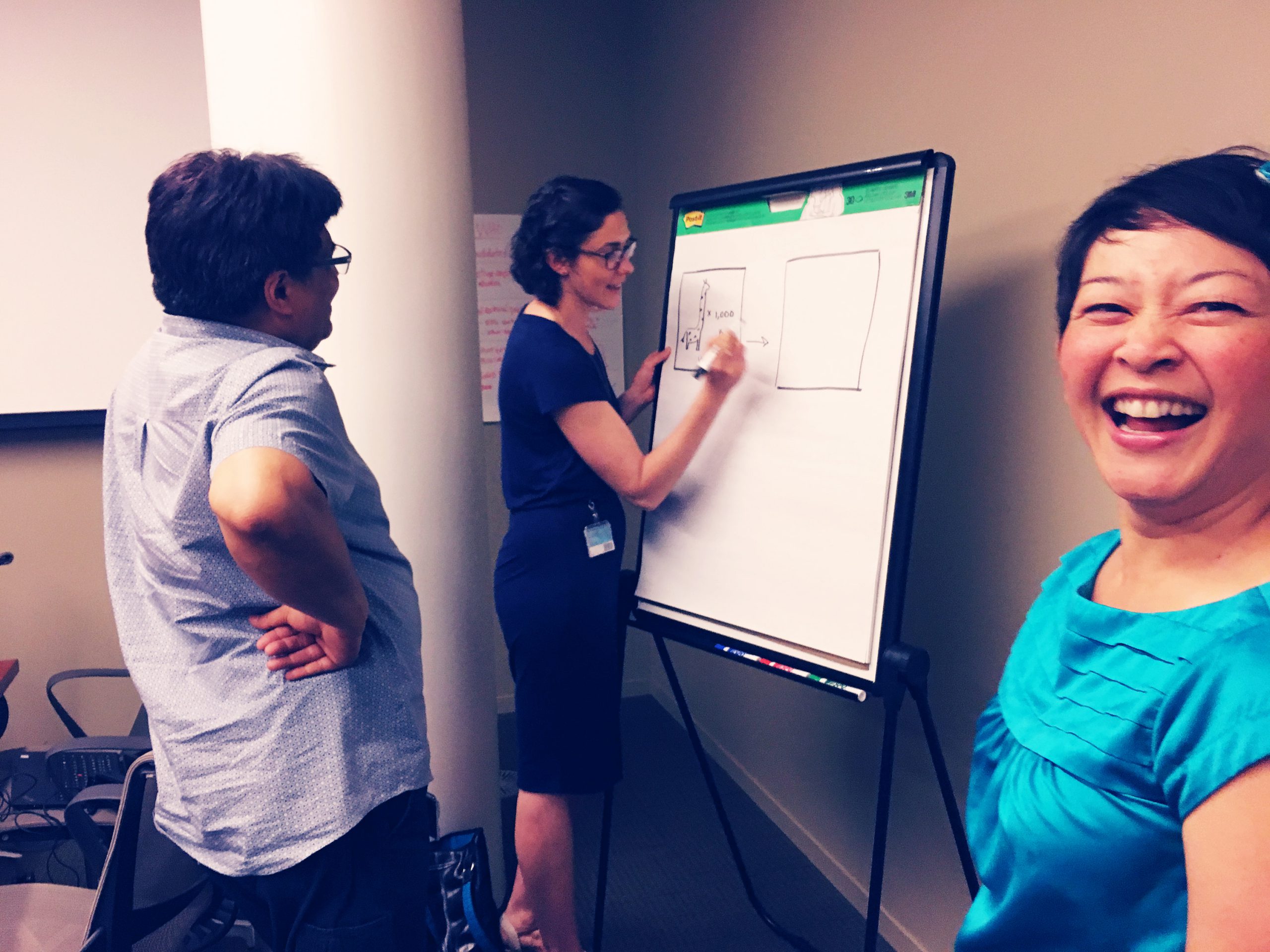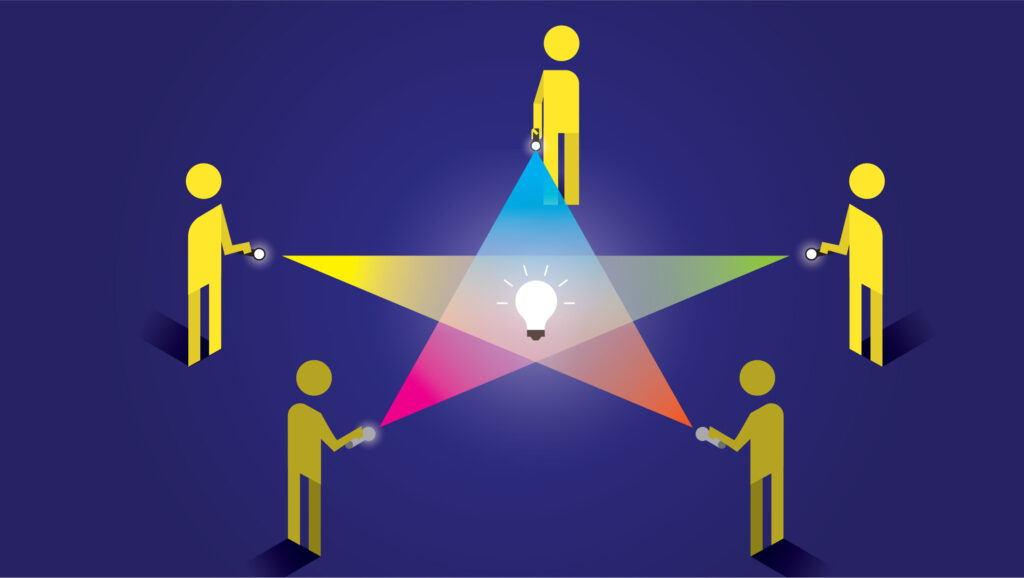Ideation sessions provide structure for creativity and collaboration
By Ted May (alum)
I don’t consider myself an ideation expert, but in my role as a sketch artist I’ve been involved in many ideation exercises. Not actually ideating mind you, but the visual facilitation and capture of ideation. You could just say I draw people’s ideas. I’ve sketched my fair share of imaginary iPhone apps, made-up magazine covers, shark tank props, even cereal boxes. So while I’ve never designed an ideation session, I can offer a unique perspective from someone who’s been on the front lines… and lived to blog about it.
What is ideation?
Ideation is part of the design process. It’s about generating as many ideas as possible to solve a problem. In a workshop setting, it’s similar to crowdsourcing—just with a very tailored “crowd”. Essentially, ideation workshops involve bringing people together to generate as many ideas as they can to solve a specific problem.
The power of group ideation techniques—I believe—comes from the variety of perspectives brought to a challenge. When you’re tackling a problem as an individual, you’re only working from your own perspective. When you get a group together, you tap into many unique perspectives. It’s like if you were to aim one flashlight at an object, you’ll get a single shadow. If you aim many flashlights from all different angles, you light up the entire object—everything is illuminated.
But how you get to that illumination is not necessarily as automatic as it might seem.
Challenges of ideation
People enjoy the opportunity to be creative, but there are a few basic fears we can all relate to that can stand in the way of getting that creativity flowing:
- Failure: Criticism, negativity and close-mindedness—from peers or even leadership—can put a damper on fresh new ideas
- Alienation: Blue sky thinking can be scary; nobody wants to end up getting criticized or laughed at
- The Unfamiliar: Old patterns of thought and comfort zones can be hard to get out of—why do we need to change?
In essence, people need to feel it’s okay to be creative. Ideation sessions have to be a “sandbox” mode where normal restrictions are suspended. And that message needs to be consistent across leadership, the facilitators, participants, and ideally even the room itself (although sometimes you have to work with what you’ve got).
The cool thing is, despite potential misgivings people love being asked to tap into their creative side. I’ve never participated in an ideation exercise that didn’t lift the energy in the room.
An effective way to transition to ideation is by starting out small with a quiet, individual exercise that allows for more introspection (e.g., jotting ideas down on Post-Its). This is followed by a collaborative small group activity—maybe a table of four or five people. After that the entire group gets together to report out their ideas. This method allows for an easier transition into ideation and also generates ideas on both an individual and group level.

Ideation exercises
There are many different ideation exercises. The key is to give people just enough structure to get them past that fear of the blank canvas, but not so much as to stifle creativity. Here are some exercises we utilize that show how visualization can play a key role in the creative process:
- Live sketching an idea or vision: This exercise involves a small group collaborating on a single image. Say, a vision of the future. This is a great way for a small group to focus on a single big idea. In our ideation workshops we will either live sketch based on input from the group, or stand back and coach. People can collaboratively create their vision, see it right away, and share it with the larger group.
- Live sketching storyboards: Other times, we’ll help groups map out a future “day in the life” or customer journey scenario. This is a great empathy exercise that puts participants in the shoes of their clients. Check out our storytelling workshop.
- Product concepting / Role play (e.g., Future Scenarios, “Shark Tank”): Any fan of reality game shows can tell you: a challenge and a deadline are great motivators to come up with ideas. A typical challenge might be to create and present a product that solves the main problem set forth without concern for cost or other restrictions. This is a great way to road test wild ideas in a friendly environment.
Closing out
One comment we hear a lot at the end of workshops when taking photos or rolling up the giant Post-Its is, “what’s going to happen to all of this great stuff?” It’s great to whip up a storm of ideas, but the flip side of that is implementation and communication. We’ve got some ideas on that as well, actually.
The important thing is that participants know their work, fun as it may have been, isn’t going to waste. Maybe the result is an infographic that shows before and after scenarios. Maybe it’s a presentation that’s used to build further support for change. Maybe it’s an explainer video that makes those new ideas more understandable and real.
Ideation sessions can be a powerful creativity multiplier when facing an intractable challenge. The key is to make sure people are in a safe, creative environment and have just enough structure to generate big ideas. And having a sketch artist in the mix is a big plus—it’s our job to help bring those ideas to life.
Ready for ideation? Let us help!
Images: illustration by Ted May / Tremendousness, photo by Bill Keaggy / Tremendousness.
